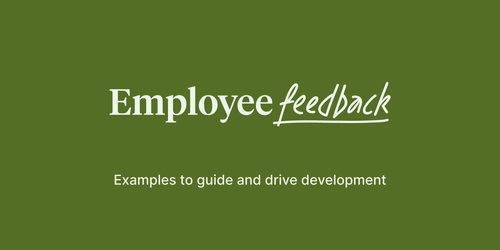
Article

Over the past two years, countless conversations have centered on leaving.
People packing up and leaving offices. People reevaluating and leaving jobs. People leaving behind their previous notions about what a “normal” career or life looks like.
But now that the world has begun to open back up, more and more discussions are focused on returning. Returning to the routines and experiences we enjoyed pre-pandemic. Returning to in-person gatherings and social outings. And in many cases, returning to the office.
As offices open their doors and welcome employees back to the desks that have been collecting cobwebs since March 2020, you’re bound to hear a new phrase: the Great Re-entry.
It’s a term coined to represent this broad return to the office environment – and, in some ways, a restoration of some of the “normal” ways of working we were familiar with before the pandemic turned work arrangements on their head.
Companies like Apple, Twitter, Google, and even the federal government have publicly announced their plans to welcome employees back to their offices. Data from the Bureau of Labor Statistics show that only 10% of employees worked remotely during March 2022, compared to 21% of employees who did so in March 2021. It’s proof that the Great Re-entry has already begun.
The return to the office symbolizes a return to some sense of normalcy, but why does it need a name? And more importantly, why do employers even need to recognize it as a major event or transition in the first place?
A return to normal may not sound significant, but after everything employees have been through during the pandemic, this is a jarring and precarious time. For many employees, their in-office habits and rituals feel like ancient history. Being called back into the office without any acknowledgment of the tumultuous shifts of the past two years could leave them feeling like they were spat out of a time warp. They can’t be expected to slide back into old norms and practices without missing a beat.
Employees will also have drastically different feelings and opinions about heading back to the office. Some will be enthusiastic about collaborating in person while others may feel unsettled, downright hesitant, or concerned about safety.
That’s why it’s crucial for employers to approach the Great Re-entry with thoughtfulness, transparency, patience, and understanding.
How can employers address the return to the office with the level of planning and tact it requires? It involves far more than announcing a return date and slapping a “Welcome back!” sign on the conference room wall. Here are some strategies that will help your employees handle yet another major shift in their work lives.
McKinsey emphasizes that one of the most important things employers can do during re-entry is demonstrate sensitivity to employees’ needs. To do this, you need to understand what their needs are in the first place.
An employee survey will give you insights into what’s going on inside your employees’ heads, including:
That will give you valuable intel you can use to outline a return-to-office strategy that incorporates the requirements and desires of your employees – rather than expecting them to accept whatever plan you come up with.
As a leader, you might be thrilled about returning to the office, but that doesn’t mean that all employees feel the same way.
Research from Slack found that there’s a pretty big disconnect between executives and employees when it comes to heading back to the office. 75% of executives said they want to work from the office three to five days each week, while only 1 in 3 employees said the same.
Those who are tepid about coming back are bound to wonder why a return is necessary – especially when things ran smoothly remotely for the past two years. Employers must be honest and upfront about why they want to welcome employees back. Perhaps survey results showed that a large percentage of team members want to work in person. Or maybe there have been some significant roadblocks with totally remote work.
That level of candor will be reassuring to employees and also help them understand the justification behind your return-to-office plans. It’s something you see real value in, rather than something you’re doing to make their lives more difficult.
Many employees may associate returning to the office with a resurgence of rigid and archaic views of what a typical workday or workweek looks like. Even if you plan to bring employees back to the office, make sure that flexibility remains a top priority.
That same research from Slack shows that 76% of employees want flexibility in where they work and 93% want flexibility in when they work.
From instituting a hybrid model to emphasizing a results-based culture that doesn’t assess employee value based on hours worked, find ways to give workers the flexibility they crave – even if they’re expected to be in the office a few days each week.
As your company prepares to return to the office, transparency is the name of the game. The more honest and upfront you can be with employees, the more reassured they’ll feel as they head back to their desks.
When announcing your return plans, be prepared to address things like:
Your goal is to empower employees with the information they need to feel like active participants in their return, rather than bystanders.
Here’s a tip that’s important but also easily overlooked: show appreciation to your employees. They’ve been through the wringer the past two years with ever-changing work arrangements, school or daycare closures, and the trauma of constantly worrying about the health of their loved ones.
Even for people who are excited about the Great Re-entry, it’s yet another major shift they need to navigate – and that can inspire some stress. Research shows that while 45% of employees say their productivity has improved since returning to work in person, 41% also admit their stress has gotten worse.
Employees deserve gratitude for rolling with the punches, so find a way to recognize their resilience and adaptability. Even something as simple as a company-wide “welcome back” lunch will make employees feel celebrated and appreciated as they head back through your doors.
Like any major change within your organization, there will be conflicting opinions. For some employees, the return will be a welcomed and long-awaited announcement. For others? An inconvenience or even a cause for doubt.
Rest assured that some level of hesitancy is normal. A survey conducted in July of 2021 found that almost 82% of organizations were dealing with some pushback from their workforce about coming back to in-person work.
Don’t avoid those confrontations and conversations. Encourage employees to share their questions and worries with you so that you can have a productive discussion. That’s far more helpful than looking the other way and hoping that those concerns dissipate over time.
The Great Re-entry can be a welcomed turning point after two years of upheaval. But, that’s only if employers are prepared to handle the transition with sensitivity.
That starts with opening the door to welcome not only your employees, but also all of their thoughts, feelings, and questions about returning to their desks.
